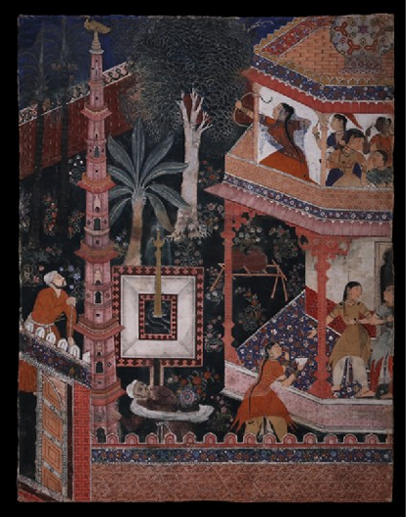Howard Hodgkin, who has been buying Indian paintings almost since he was a teenager, is the latest in a long line of artist-collectors, from Rubens to Picasso. The art collections of artists are unlike the collections of the rich and titled. The difference is hard to define, but it might come down to respect: the art bought by artists usually seems to have been bought for love, not display. Certainly that's the impression given by ''Indian Paintings and Drawings from the Collection of Howard Hodgkin'', which opened last week at the Ashmolean Museum in Oxford.
Hodgkin has described art collecting as ''an illness'' and ''an incurable obsession''. Some works have obsessed him more than others. For the 16th-century Mughal watercolour called Mihrdukht Shoots Her Bow at the Ring he exchanged what was, at the time when he acquired it, his entire collection of Indian art: 62 paintings for one. ''But a good one.''
The standard explanation advanced for Hodgkin's love of Indian art is superficially convincing: here is a Western European artist, working within the Intimist tradition of Bonnard and Vuillard, who admires Indian art for its brilliant miniaturist qualities; an artist who finds, in the art of the Indian subcontinent, parallels to his own preference for bright, saturated colours and for a visual language of eloquent compression.
But this is to disregard the true qualities of most of the Indian art he owns. One of the more striking features of Hodgkin's Indian art collection is the predominance of low-toned, essentially linear paintings and drawings, especially from the Kota school. His interest in Indian painting may be hard to account for precisely because it does not neatly fit the standard genealogical model of influence peddled by conventional art history: the notion that artists who collect art are...

Sudden shafts of reality
27-10-1992

